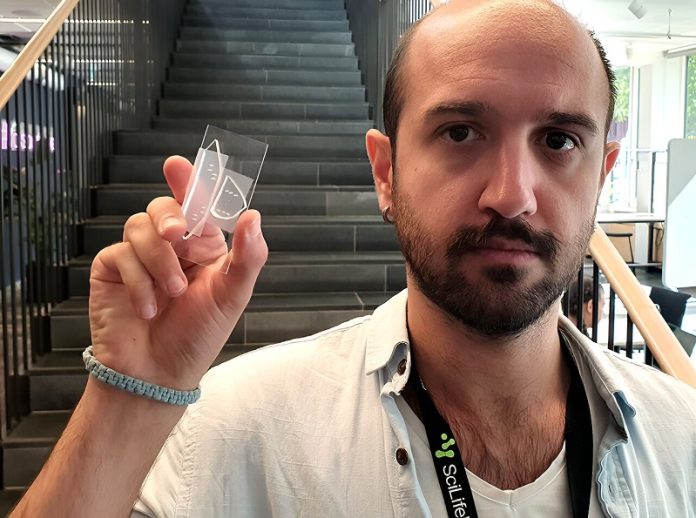
Researchers at KTH Royal Institute of Technology have developed a faster and more precise method for separating tiny particles in fluids, which could be a game-changer for both environmental and medical applications.
This new technique, described in a recent study published in Microsystems & Nanoengineering, could help in studying microplastics in water or analyzing cancer cells in blood.
The method, known as elasto-inertial microfluidics, involves controlling how small particles move within a fluid.
This is done by taking advantage of both the elastic properties of the fluid and the forces that occur when the fluid flows.
Selim Tanriverdi, a Ph.D. student at KTH and the study’s lead author, says this technique has a wide range of potential uses, including medical testing, environmental monitoring, and manufacturing.
One of the key advantages of this method is that it can quickly and efficiently sort cells or other particles in blood samples.
It can also remove pollutants from water for analysis or help develop better materials by separating different components more effectively.
The microfluidic device used in this method features specially designed channels that can process large amounts of fluid quickly, making it ideal for tasks that require fast and continuous separation of particles.
Within these channels, particles are sorted and lined up, which is essential for separating different types of particles.
The improved accuracy of this technique is achieved by using special fluids with high concentrations of polymers, giving them a viscoelastic property. This means the fluid can push like water but also spring back, similar to the way egg whites behave. By combining these forces, researchers can guide particles to move in specific ways.
Tanriverdi explains that this new approach could significantly reduce the time needed for blood analysis, which is crucial for patient care.
The study found that larger particles were easier to control and stayed focused even when the fluid flow increased. Smaller particles required optimal flow rates to stay in line, but with the right conditions, they too could be controlled more effectively.
This method originated from a project aimed at developing technologies to monitor micro- and nano-plastics in water.
Tanriverdi, who previously worked as a Marie Skłodowska-Curie researcher on the MONPLAS project, believes that this technique could also be applied to a variety of other fields, making it a versatile tool for both environmental and medical research.



